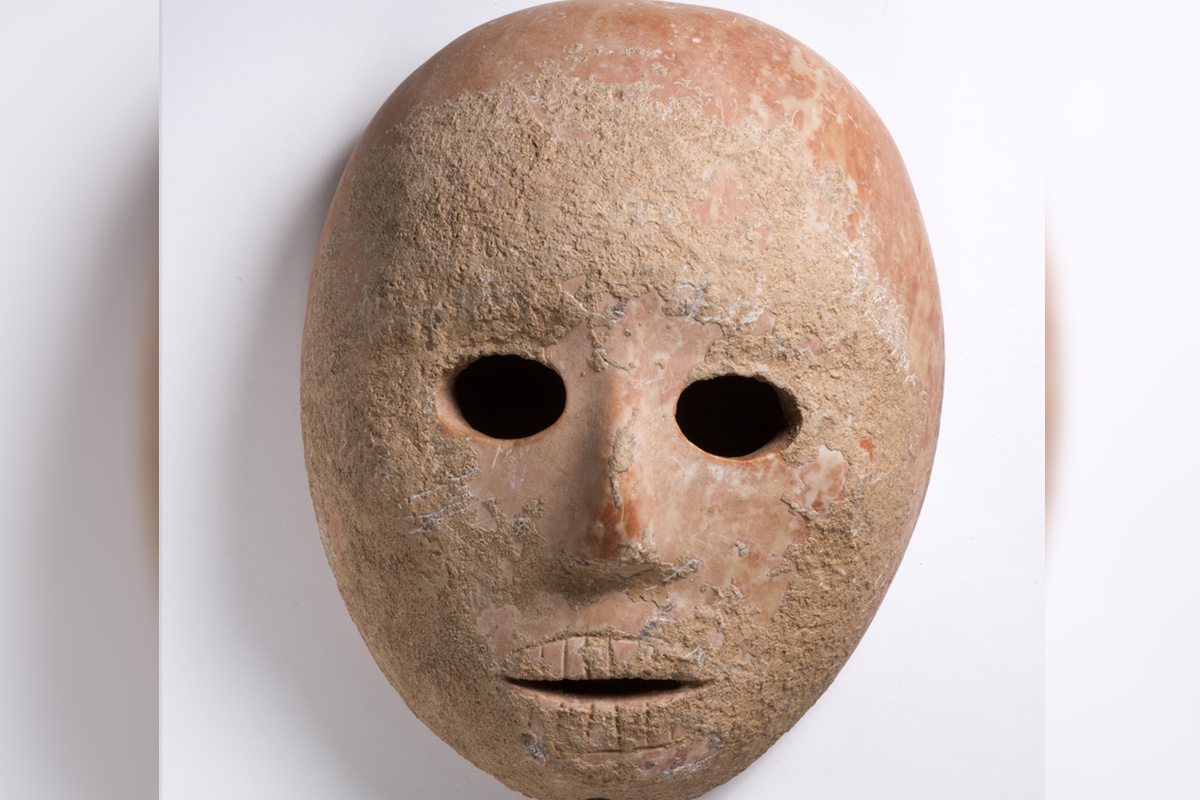Haunting, 9,000-Year-Old Stone Mask Discovered in a Field in the West Bank

With oval-shaped holes for eyes and a small ridge for a nose, the mask resembles something a 1970s hockey goalie (or Jason in "Friday the 13th") might have worn.
But this mask was carved out of stone 9,000 years ago, perhaps in one of the world's first farm towns.
The mask was discovered near Pnei Hever, an Israeli settlement east of Hebron in the West Bank. Ronit Lupu, an archaeologist with the Israel Antiquities Authority (IAA) told Live Science that a man had been walking through a field when he picked up the mask from the ground and eventually turned it over to the IAA's Antiquities Theft Prevention Unit. [Photos: The World's Oldest Masks]
"This was an innocent find, and the person who found it was the person who showed us where he found it," Lupu said.
Lupu and her colleagues think the mask probably was brought to the surface by agricultural activities that disturbed the soil. The field is full of Neolithic artifacts, indicating that there is an archaeological site underground, which the researchers hope to excavate eventually, Lupu said.
A close look at the mask shows that it has some finer details carved into it, such as teeth around the small mouth slit.
"I love the cheeks — it has cheekbones," Lupu said. She added that one of the staff members at the Rockefeller Museum in Jerusalem cried upon seeing the mask.
Sign up for the Live Science daily newsletter now
Get the world’s most fascinating discoveries delivered straight to your inbox.
That the stone mask could provoke such a reaction might not be so surprising.
A similar mask was bought in 1970 by Moshe Dayan, who was Israel's defense minister at the time. Dayan fancied himself an amateur archaeologist and often engaged in practices that would be called looting today. "If there is any power in the world able to banish evil spirits, it must assuredly dwell in this mask," Dayan once wrote of the mask he purchased.
Besides Dayan's mask, which is now in the Israel Museum, 14 similar artifacts have been discovered in the Southern Levant region. But this is the first time in about 35 years that such a stone mask has been discovered. Very few of them come from known archaeological sites.
For instance, Palestinian archaeologist Jibril Srur later investigated the spot where Dayan's mask was found, only to document a large village that once existed at the site, during the so-called Pre-Pottery Neolithic B Period, around 9,000 years ago.
"The securest archaeological context for any Neolithic mask of this type is for the Nahal Hemar mask," which is in the collection of the Israel Museum, archaeologist Morag Kersel, of DePaul University, told Live Science in an email. "This mask was discovered in the spring of 1983 by archaeologists Ofer Bar Yosef and David Alon, who excavated a cramped, dark, debris-filled cave overlooking the Dead Sea," Kersel said.
Another stone mask had been bought in the 1890s from villagers in Er-Ram, a Palestinian town near Jerusalem, which is now at the Palestine Exploration Fund in London, Kersel said. Ten other similar masks are in the Judy and Michael Steinhardt collection, but archaeologists don't know where they came from because they were all acquired from the antiquities market.
The newly discovered mask, and some of the others, have holes drilled around their edges, possibly so that they could be tied around a person's face or another object. Without much archaeological context for these artifacts, archaeologists don't know exactly how the masks were used 9,000 years ago; some think they were linked to spiritual beliefs involving ancestor cults.
"When we talk about the Neolithic period, we talk about the transition from a hunter-gatherer society to permanent settlements," Lupu said. "People are starting to domesticate plants and animals. This is a time when the spiritual world is very strong."
Besides the stone carved masks, archaeologists have also discovered plaster-covered skulls in the region from this same period. Lupu said a spiritual purpose might be the only explanation for such elaborately crafted objects. "They didn't dig with them," she said. "They didn't hunt with them."
Lupu presented the discovery today (Nov. 29) at the Israel Prehistoric Society annual meeting.
- 'Tomb Raider': Here Are 11 Pioneering Women Archaeologists
- Archaeologists Are Hot on the Trail of These 16 Spectacular Mysteries
- 25 Grisly Archaeological Discoveries
Original article on Live Science.










